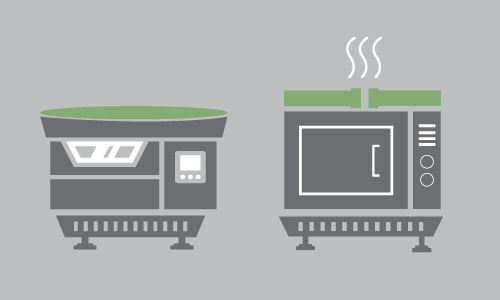The premium push is hitting grocery stores—and it’s changing the way bakery operations work. Organic foods continue to see demand, artisan products are evolving and finding their way into shopping carts, and ingredients are changing. With this push comes a challenge. How can you justify price points, deliver consistency, innovate, and increase shelf life while making changes to adapt?
Artisan and ‘Artisan-Like’ Breads Finding Their Way into Consumer Shopping Carts
One of the biggest trends entering the baking space? Artisan bread. Discussed at the International Baking Industry Exposition (IBIE) and in a recent Baking Business article, customers are pushing demand for crafted, fermented products that feel handmade.
With a higher price point, fewer stabilizers and emulsifiers, and rustic texture, the companies have spent the better part of two decades working to deliver this to the mainstream, and it’s finally taking hold. In fact, despite the general stability and slight decrease in bread sales, artisan products are finding success—a 5% decrease in unit sales in 2018 only resulted in a 0.3% decrease in dollar sales.
Like we have mentioned in our article on the premiumization of frozen foods, higher price tags mean higher expectations. Similar to that market’s fight against meal kits, bread manufacturers today have to compete with the in-store bakery, which has consistently outperformed packaged bread in recent years.
Pair this with the already-low margin for error in the baking industry, and companies in the baking world will need to work even harder to deliver a consistent and exceptional product experience.
Consumers Still Love Their Bagels—But Demand Premium Products
The billion-dollar bagel industry is another anomaly in the baked goods market, seeing good monetary growth of 5.85 percent to $910.2 million in 2018, according to Snack Food and Wholesale Bakery. Like the trend towards artisan breads, consumers are pushing toward ‘cleaner’ and more diverse bagel products.
Organic products, a greater choice in ingredients and flavors, and additional premium products, driven by innovators like Flower Foods’ Dave’s Killer Bread—a brand that entered the market in 2017 and saw 136.4 percent growth.
Clean Labels Make for a Potential Recipe Reevaluation
As millennials take command of the market, the word transparency has never been considered higher priority. The clean-label evolution requires bakers to focus on clear and transparent labeling, but still have to balance this with shelf life needs and product quality.
This requires bakers to rethink the ingredients and processes they’ve relied on. Among the moves bakers have considered:
- A move from corn syrup to honey
- A change to enzyme-based crumb softening solutions for shelf life
- A mold inhibitor that doesn’t use calcium propionate
- An update to yeast to enhance taste and shelf life.
It all comes down to three focuses as baking operations look to hyperextend shelf life while maintaining clean labels: softening technology, antimicrobials, and antioxidants. These changes may warrant a change in time or temperature or make the product even harder to maintain consistency.
Pollution Control for Bakery Operations
Everyone likes the smell of freshly baked bread. But for companies who make it and EPA regulators, the smell of freshly baked bread also means something else as well. Volatile organic compounds, or VOCs.
For organizations who specialize in baking these products, you face a variety of challenges in controlling these pollutants. Short product life means you have to work near highly populated areas with more stringent standards. The lower required temperatures leave you a minimal margin for error, and you need a pollution control solution that doesn’t interfere with your bake.
As a leading provider of pollution control solutions for the baking industry, we can help you take command of your baking process, controlling everything from dust control to ethanol mitigation. We’ve helped companies like yours to implement trusted air pollution control solutions like catalytic oxidizers and in some cases regenerative thermal oxidizers designed to reduce risk, improve airflow, and increase efficiency whether you are redesigning a facility or updating your pollution control.
Get to know more about our work with baking operations by reading our case studies, download our VOC abatement guide and guide to selecting an oven, and contact us for a free consultation.




